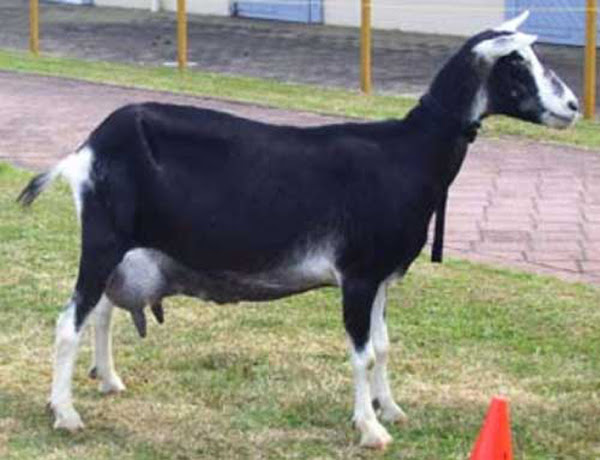The Sable goat is another good breed of dairy goat which is also popular for milk production. It is similar in appearance to the Saanen goat, except the coloring.
And they are derived from the Saanen goats which is a Swiss breed. The Saanen goats are completely white in color, while the Sable goats can appear in any color but they must not have more than 50 percent white coloration.
Sable goats are similar in appearance to the Saanens, but their different coloration are the result of the interaction of recessive genes from the sire and the dam which were used for the development.
The Sable goats are sometimes referred as ‘the Saanens in party clothes’. The breed is recognized by the American Dairy Goat Association (AGDA). However, read some more information about this breed below.
Sable Goat Characteristics
The Sable goats are medium sized animals with very similar appearance to the Saanen goat, except the coloration. They can come in a variety of colors, including black, brown and grey. They sometimes have white coloring. But complete white coloring is not permitted.
Body of the Sable goat is very deep, wide and long with well-sprung ribs pointing to the rear. Their back is straight with very little slope to the rump.
Their legs are long, strong, straight, squarely set and wide apart. They have large and upright ears (sometimes rounding at the tip and pointing forward).

Hair of the Sable goat is short and fine. Their head is wide and long with straight or dished face. Their jaw is strong, and have a deep muzzle. However, overall appearance of the Sable goats is tall, heavy and rangy.
Average body height of the mature bucks is around 32 inches at the withers, and around 30 inches for the does. And average live body weight of the mature animals is around or up to 65 kg.
Feeding
Feeding the Sable goats is easy and simple. They are good grazers and will do very well if allowed to pasture. But you need to supplement their diet with good quality and nutritious concentrated feeds. Read complete guide for feeding dairy goats.
Breeding
The Sable goats are not seasonal breeders, and they can actually breed throughout the year. They are polyestrous, which means they can breed year-round. They have a gestation period of approximately 150 days and usually give birth to twins or triplets. They are also good mothers and will often nurse their kids for several months.
Sable goats can be bred for meat, milk, or fiber production. Their meat is lean and flavorful, making it a popular choice among consumers. Their milk is high in butterfat and protein, making it well-suited for cheese and yogurt production. Their wool is soft and durable, making it ideal for spinning into yarn. Read more information about goat breeding.
Abilities
The Sable goats are very hardy and strong animals. Their colored skin makes them perfect for hot and sunny areas. And they are not prone to skin cancer, like the Saanens. They are superior animals with good milking abilities.
Behavior
Sable goats are known for their docile and friendly temperament. They are social animals and enjoy being around people and other goats.
This makes them great for small-scale farming operations and petting zoos. They are also easy to handle and train, which makes them ideal for beginners.
Sable goats are also adaptable to different environments. They can thrive in both hot and cold climates and are resistant to many common goat diseases.
This makes them a good choice for farmers who are looking for a breed that can withstand harsh weather conditions.
Health
Sable goats are generally healthy animals and are resistant to many common goat diseases. However, like all animals, they are susceptible to certain illnesses and conditions.
One common health issue in Sable goats is foot rot, which is caused by a bacterial infection. This can be prevented by keeping their hooves clean and dry and trimming them regularly.
Another health issue that can affect Sable goats is internal parasites, such as worms. These parasites can cause weight loss, anemia, and other health problems if left untreated.
To prevent this, farmers should regularly deworm their goats and keep their living areas clean and dry.
Uses
The Sable goats are dairy goats and they are raised mainly for milk production. Their milk is of very good quality containing about 3-4 percent of butterfat content.







Will they servive in Kenya